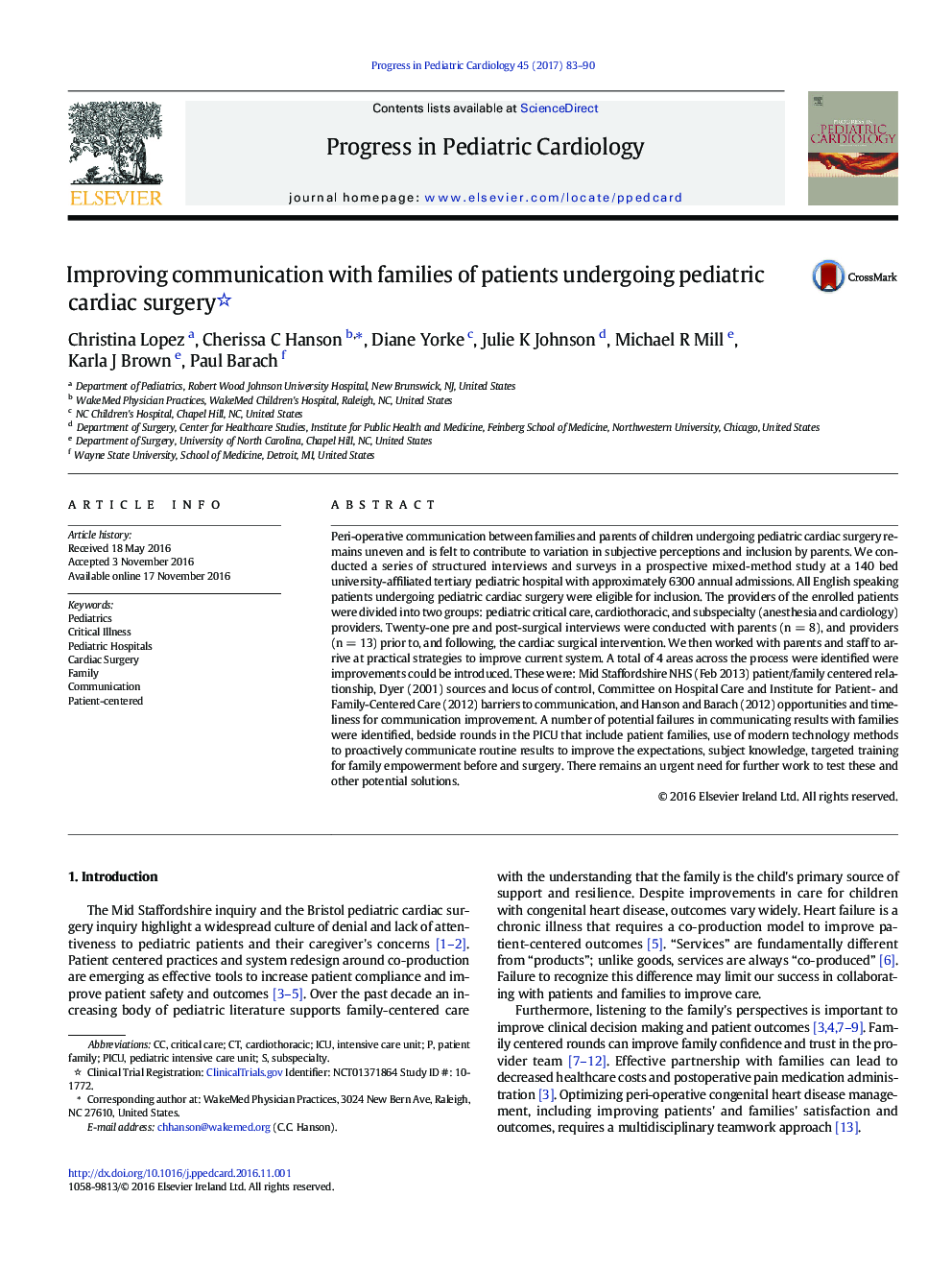| Article ID | Journal | Published Year | Pages | File Type |
|---|---|---|---|---|
| 5619714 | Progress in Pediatric Cardiology | 2017 | 8 Pages |
â¢Further awareness on building an effective relationship between providers and families is needed.â¢Strategies to improve communication between providers, patients, and families are identified.â¢Further research is needed to explore the impact of implementation of interventions identified.
Peri-operative communication between families and parents of children undergoing pediatric cardiac surgery remains uneven and is felt to contribute to variation in subjective perceptions and inclusion by parents. We conducted a series of structured interviews and surveys in a prospective mixed-method study at a 140 bed university-affiliated tertiary pediatric hospital with approximately 6300 annual admissions. All English speaking patients undergoing pediatric cardiac surgery were eligible for inclusion. The providers of the enrolled patients were divided into two groups: pediatric critical care, cardiothoracic, and subspecialty (anesthesia and cardiology) providers. Twenty-one pre and post-surgical interviews were conducted with parents (n = 8), and providers (n = 13) prior to, and following, the cardiac surgical intervention. We then worked with parents and staff to arrive at practical strategies to improve current system. A total of 4 areas across the process were identified were improvements could be introduced. These were: Mid Staffordshire NHS (Feb 2013) patient/family centered relationship, Dyer (2001) sources and locus of control, Committee on Hospital Care and Institute for Patient- and Family-Centered Care (2012) barriers to communication, and Hanson and Barach (2012) opportunities and timeliness for communication improvement. A number of potential failures in communicating results with families were identified, bedside rounds in the PICU that include patient families, use of modern technology methods to proactively communicate routine results to improve the expectations, subject knowledge, targeted training for family empowerment before and surgery. There remains an urgent need for further work to test these and other potential solutions.
